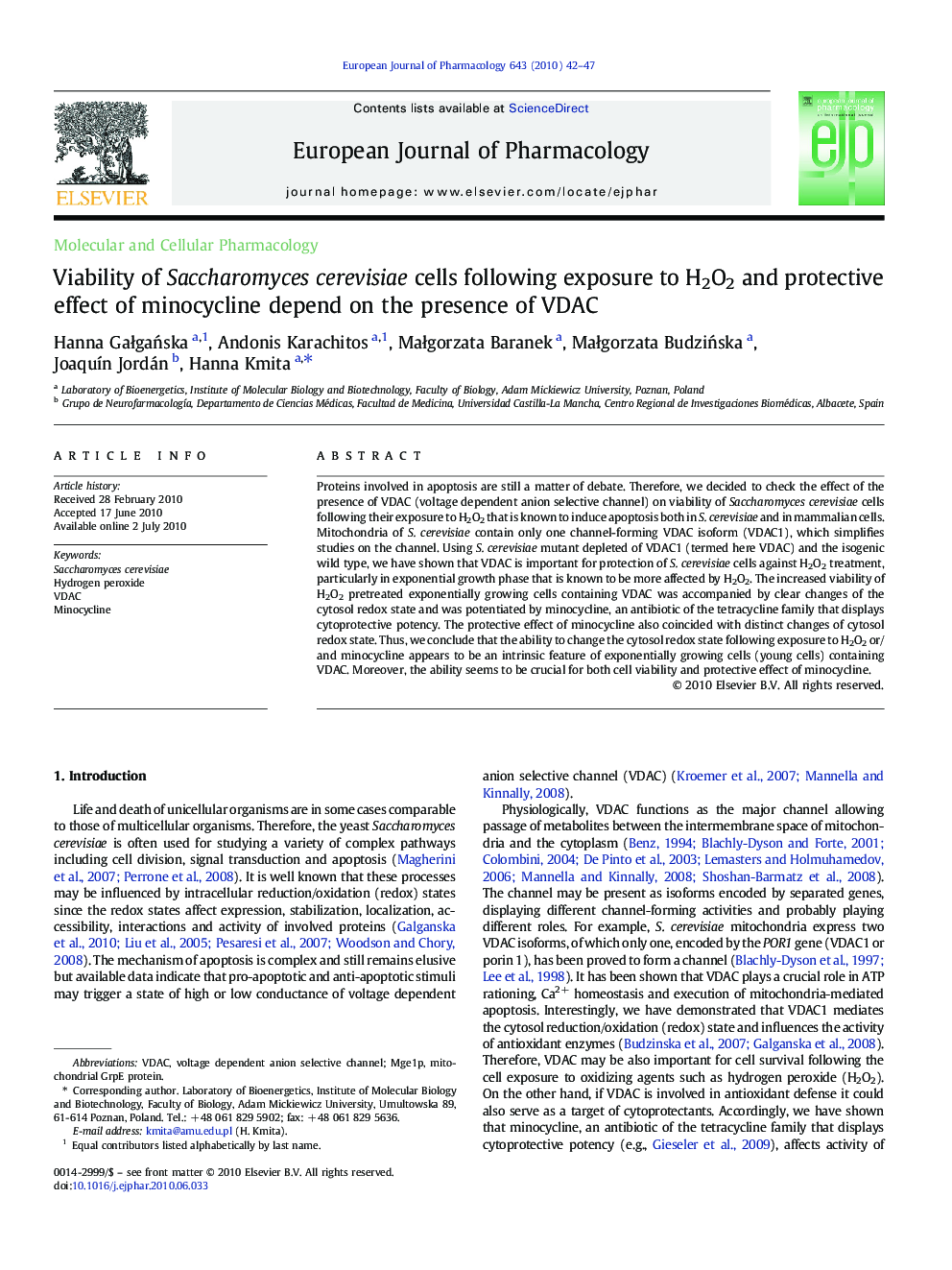| Article ID | Journal | Published Year | Pages | File Type |
|---|---|---|---|---|
| 2533402 | European Journal of Pharmacology | 2010 | 6 Pages |
Proteins involved in apoptosis are still a matter of debate. Therefore, we decided to check the effect of the presence of VDAC (voltage dependent anion selective channel) on viability of Saccharomyces cerevisiae cells following their exposure to H2O2 that is known to induce apoptosis both in S. cerevisiae and in mammalian cells. Mitochondria of S. cerevisiae contain only one channel-forming VDAC isoform (VDAC1), which simplifies studies on the channel. Using S. cerevisiae mutant depleted of VDAC1 (termed here VDAC) and the isogenic wild type, we have shown that VDAC is important for protection of S. cerevisiae cells against H2O2 treatment, particularly in exponential growth phase that is known to be more affected by H2O2. The increased viability of H2O2 pretreated exponentially growing cells containing VDAC was accompanied by clear changes of the cytosol redox state and was potentiated by minocycline, an antibiotic of the tetracycline family that displays cytoprotective potency. The protective effect of minocycline also coincided with distinct changes of cytosol redox state. Thus, we conclude that the ability to change the cytosol redox state following exposure to H2O2 or/and minocycline appears to be an intrinsic feature of exponentially growing cells (young cells) containing VDAC. Moreover, the ability seems to be crucial for both cell viability and protective effect of minocycline.
